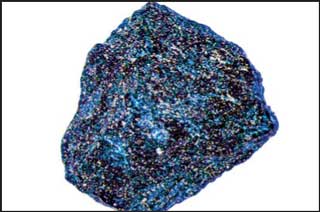Saturday Dec 06, 2025
Saturday Dec 06, 2025
Friday, 17 March 2023 00:30 - - {{hitsCtrl.values.hits}}
 |
| Professor Ranga Dias |
 |
| fea superconducting materials reddmatter lutetium hydride
|
www.msn.com: Scientists have discovered a new material that could be set to change the entire world
Researchers say they have created a superconducting material that works at both a temperature and a pressure low enough to actually use it in practical situations.
It reaches a breakthrough that scientists have been chasing for more than a century, in making a material that is able to transmit electricity without resistance, and pass magnetic fields around the material.
Its discovery could lead to power grids that are able to seamlessly transmit energy, saving up to 200 million megawatt hours that is currently lost to resistance. It could also contribute to nuclear fusion, a long-awaited process that could create unlimited power.
Other applications include high speed, hovering trains and new kinds of medical equipment, they suggest.
A team led by the same scientist, Professor Ranga Dias, previously reported the creation of two slightly less breakthrough but similarly superconducting materials in papers that were published in Nature and Physical Review Letters. The Nature paper was eventually retracted by the journal’s editors, amid questions over the scientists’ approach.
This time around, Professor Dias and his team say they took extra steps to avoid similar criticism. Scientists looked to validate that old paper with new data collected outside of a lab, with a team of scientists watching as it happened live, and undertook a similar process for the new research.
The new material is described in a paper, ‘Evidence of near-ambient superconductivity in a N-doped lutetium hydride’, published in Nature today.
The material has been nicknamed “reddmatter”, after its colour and as a nod to a material from Star Trek. It found that name during the process of creating it, when scientists found that it surprisingly switched to become a “very bright red” while it was being created.
Professor Dias and the team made the material by taking a rare earth metal named lutetium and mixed it with hydrogen and a small part of nitrogen. They were then left to react for two or three days, at high temperatures.
The compound came out a as a rich blue, according to the paper. But it was then pressed at very high pressure, when it turned from blue to pink as it reached superconductivity, and then again became a rich red at its non-superconducting metallic state.
To work, the material still requires being heated to 20.5 degrees Celsius and compressed to about 145,000 psi. But that is vastly less intense than other, similar materials – including those announced in 2020 by Professor Dias that brought excitement and scepticism from scientists.
And it is practical enough that the scientists involved in the paper say that it will mark a new era for the practical use of superconducting materials.
“A pathway to superconducting consumer electronics, energy transfer lines, transportation, and significant improvements of magnetic confinement for fusion are now a reality,” Professor Dias said in a statement. “We believe we are now at the modern superconducting era.”
Those practical applications might include using the material to accelerate the development of “tokamak machines” that are being developed to achieve nuclear fusion.
(Source: https://www.msn.com/en-us/news/technology/scientists-discover-superconducting-material-that-could-bring-total-revolution-in-energy-and-electronics/ar-AA18rpHb?li=BBnbfcL)